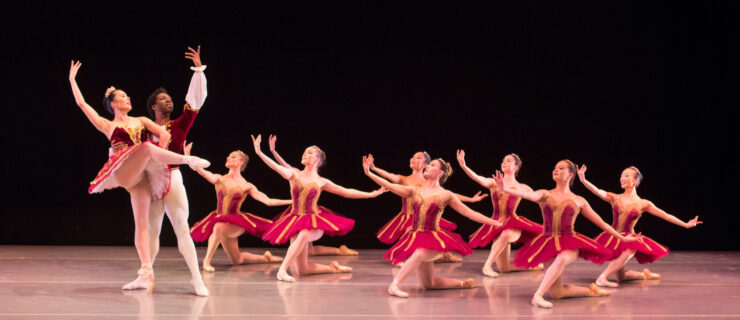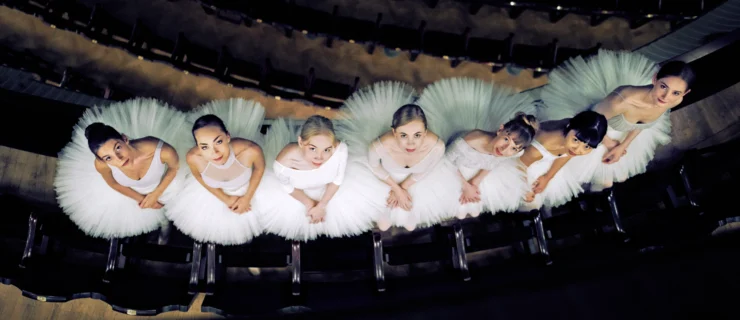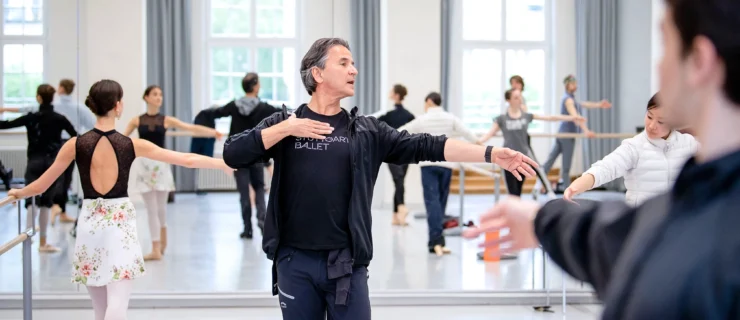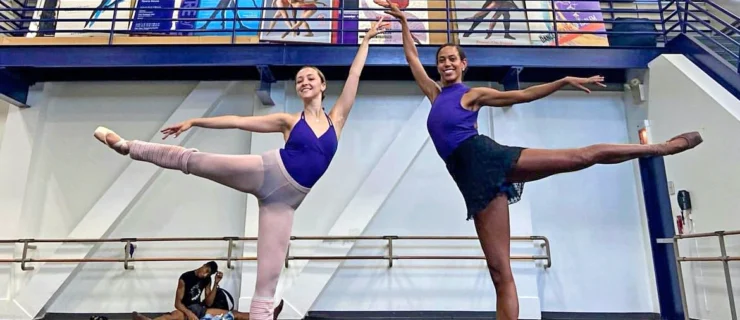Becoming Giselle: Gillian Murphy Shares How She Mastered One of Ballet's Most Iconic Roles
Photography by Joe Toreno.
When I was 19 years old and in the corps de ballet of American Ballet Theatre, a domino effect of casting changes left me with three days to learn and prepare my first dramatic leading role: Myrtha, the Queen of the Wilis. There was not enough time to feel overwhelmed, let alone to delve into the nuances of her character. Although diving right in and winging it on willpower is exhilarating, I have learned in the 15 years since that one of my favorite aspects of dancing is the research and emotional decision-making that go into developing a dramatic interpretation. I recently prepared for the role of Giselle in Ethan Stiefel and Johan Kobborg’s new production for the Royal New Zealand Ballet. Although having advance notice gave me the time to feel nervous about tackling such an iconic role, it also allowed me the opportunity to develop my own interpretation through a mixture of research and instinct, which was further refined by coaching, rehearsal and performance.
Murphy in RNZB company class at The Music Center.
An Act II rehearsal.
Dance biographer Richard Austin once wrote: “A ballerina who may tomorrow dance Giselle for the first time, preserves (though she may not be aware of it) fragments of many lost Giselles…they live on in her, dance again, secret and unknown, in her dancing. She has her inheritance.” My journey began at the New York Public Library for the Performing Arts, where I found descriptions or archival films of many famous Giselles—from Carlotta Grisi’s stunning premiere in 1841 to the stark contrasts between Galina Ulanova and Olga Spessivtzeva’s interpretations (uninhibited joy versus eccentricity) and the impact of ballerinas such as Alicia Markova, Carla Fracci and Natalia Makarova in the role. Aside from contemplating the ballet’s historical significance, its sources of Romantic inspiration and its universal resonance over time, I had a key personal realization during this research phase. Many of the great Giselles were strong and lean but not wispy in the modern sense, and they imbued her character with delicacy through artistry and a weightless movement quality rather than through a particularly fragile body-type. Therefore, I needed to work on moving with more ethereality, but my natural strength and slightly curvy shape would not exclude me from suiting the role. With this myth undone, my excitement gained momentum.
After learning about the Giselles of the past and having admired many of today’s greatest interpreters, I had distilled my own theories regarding characterization. First of all, the fundamental key to embodying Giselle is to radiate purity and sensitivity. In the first act, she glows with an inner joy and with her love for dance and for Albrecht. She is so honest, and her feelings for Albrecht so wholehearted, that she cannot reconcile his betrayal with her soulful belief in the goodness of the world. She experiences her emotions, whether happiness or uncertainty, with such a quiet intensity that her sudden death from heartbreak is truly plausible, and even death pales in the face of her eternal compassion. Her ghostly spirit is simply an elevated extension of her former earthly self. As Makarova writes in her insightful autobiography, “in the second act, [Giselle’s] soul, freed of all that is worldly, superficial, and ordinary, is filled with regal quietude and wisdom.” Her inner joy is now a quiet sadness, but more than ever she exudes love.
Dress rehearsal on the Dorothy Chandler Pavilion stage.
With this lofty objective in mind, I began to work one holiday week on the steps and range of expressive details with my ABT coach, Susan Jaffe. My initial sessions rehearsing with Susan informed and corroborated my intellectual research and emotional reflections, and I began the transition from philosophy to choreography. As any dancer is well aware, there are a plethora of things we work on day in and day out to refine the classical technique. With Giselle specifically, the Romantic style deeply affects the technical aspects of the second act because the whole body must project a feeling of floating. This requires, among many other stylistic details: an elongated neck, a willowy use of the arms, a real lift and a slight hovering incline of the upper body. Several moments in the second act are daunting and treacherous, but finding that intense control and gravity-defying lightness of quality is the means to express the essence of Giselle’s soaring spirit and her sustained, eternal love. Character is paramount; it is not enough to create shapes and movements that evoke otherworldly Romantic lithographs. Giselle’s physicality in every moment serves to express her mystical wisdom and her yearning to protect Albrecht.
Leading up to my RNZB premiere in Wellington, New Zealand, I had further invaluable guidance from Amanda McKerrow, who came to coach the production’s Giselles, and she helped me continue to integrate my hypothetical interpretation with actual movement and expression. As I faced the challenges of the choreography in my solos and with my strong and thoughtful partner in New Zealand, Qi Huan, many of my reflections on the nuances of the character seemed unnecessary. But as Mikhail Baryshnikov has said, “I know that many of these ideas do not translate literally to an audience, do not always come across, but they help me believe in the role as I feel it should be.” I found this notion particularly useful while tackling Giselle’s mad scene, which must be powerfully realistic, rather than artificially fevered, in order to do justice to her heartache. The only way I could initially approach this scene was to figure out the inner monologue and intention that motivates Giselle’s pacing amidst her reveries, regression and grief. For instance, the circle she draws with her sword is believed by the superstitious villagers to represent a circle of death. When Hilarion steps in to try and save her, he is deliberately crossing the threshold of death, and she recoils in disbelief and horror.
A quick drink in the wings between entrances.
Susan Jaffe, Amanda McKerrow, Johan Kobborg and my fiancé, Ethan Stiefel, were all incredibly generous in sharing their insights but also consistently supportive of my following my own intuition. In the words of another Giselle, Violette Verdy, “content cannot be imitated; it must be understood…the dancer must always come back to herself and the process of self-discovery; only in this way is it possible to build a role.”
A good luck kiss from fiancé and company director Ethan Stiefel.
As I moved from the studio to the stage for the first time, I felt prepared enough to trust my instinct and react freely to the music. My first performance of Giselle in Wellington was one of the highlights of my career, and I have been fortunate to have many more shows, including two live, filmed performances for the New Zealand Film Commission’s movie of Giselle, as well as shows in Beijing and Los Angeles. Aside from continuing to work on many technical nuances and playing with various dramatic choices, as the shows went on I felt a greater sense of the bittersweet pathos at the end of the first act and for sustained moments in the second act. Each performance felt quite different from the last, and it made me realize that the journey in such a role is never truly over. The spirit of Giselle is luminous and haunting, and I am humbled and exhilarated to be amongst those who have brought her back to life.





